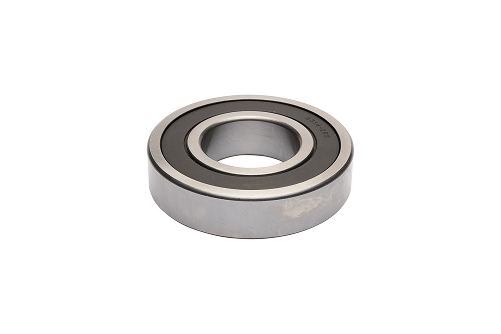In machinery and mechanical systems, bearings are essential components that allow smooth and efficient movement between moving parts. From conveyor systems to industrial machines, bearings play a crucial role in reducing friction, supporting loads, and enabling the rotation or linear motion of various machine parts. But what exactly is a bearing, and why is it so important?
Understanding Bearings: The Basics
A bearing is a mechanical device used to reduce friction between two moving parts by providing a smooth surface for them to move against. It does this by supporting the rotating or moving components, allowing them to move smoothly while minimizing wear and tear. Bearings can be found in everything from large industrial machines and vehicles to smaller devices like motors and household appliances.
Bearings come in many shapes and sizes, but the most common types consist of an inner and outer ring with rolling elements (such as balls, rollers, or needles) in between. The rolling elements are what help reduce friction by rolling rather than sliding against the surfaces.
How Do Bearings Work?
Bearings function by enabling relative motion between two parts with minimal friction. The rolling elements inside the bearing—whether they are balls, cylinders, or needles—reduce the surface area in contact between the moving parts, minimizing the resistance that would typically cause wear.
As one part of the bearing rotates or moves, the rolling elements roll smoothly along the surfaces, allowing the other part to rotate or move with ease. This helps prevent excessive heat generation and friction, ensuring that the system runs efficiently and with less wear on the components.
Why Are Bearings Important?
Bearings provide several key benefits that make them indispensable in a wide range of applications:
Reducing Friction: By minimizing friction, bearings help reduce energy loss, heat buildup, and wear on moving parts.
Supporting Loads: Bearings support both radial (side-to-side) and axial (up-and-down) loads, ensuring that parts can move smoothly without becoming misaligned or damaged.
Increasing Efficiency: With less friction and wear, machinery can run more efficiently, which leads to longer operational lifespans and less frequent maintenance.
Enabling Movement: Bearings allow for smooth rotation or linear movement, whether in high-speed applications like motors or slower systems like conveyor belts.
Types of Bearings
There are several different types of bearings, each designed for specific applications. Some of the most common types include:
Ball Bearings: The most common type, ball bearings use spherical balls to reduce friction. These bearings are versatile and used in a variety of applications, from industrial machines to automobiles and household appliances.
Roller Bearings: Instead of balls, roller bearings use cylindrical rollers to support loads. Roller bearings are typically used in heavier load applications, such as in conveyor systems and industrial equipment.
Needle Bearings: A type of roller bearing that uses long, thin rollers (needles). Needle bearings are used in applications where space is limited and the load is relatively high, such as in automotive or industrial machinery.
Tapered Roller Bearings: These bearings have tapered rollers that handle both radial and axial loads. Tapered roller bearings are commonly used in automotive applications, like wheel hubs, and in heavy-duty machinery.
Thrust Bearings: Thrust bearings are designed to support axial loads (along the axis of the bearing). They are commonly used in automotive engines, gearboxes, and other machinery that deals with directional forces.
Magnetic Bearings: Magnetic bearings use magnetic fields instead of physical rolling elements to support rotating shafts. These bearings are used in specialized applications, such as in high-speed turbines or precision equipment.
Applications of Bearings
Bearings are found in virtually every mechanical system, with applications across many industries:
Automotive Industry: Bearings are used in engines, transmissions, wheels, and other parts of vehicles to ensure smooth operation.
Industrial Machinery: Bearings are critical in machines that involve rotation or linear motion, such as pumps, conveyors, and compressors.
Aerospace: Bearings are used in aircraft engines and various other components to minimize friction and maintain performance under extreme conditions.
Home Appliances: Bearings can be found in motors for devices like washing machines, fans, and refrigerators, ensuring they run efficiently and quietly.
Maintaining Bearings
To ensure bearings function properly and last as long as possible, regular maintenance is necessary. Here are some tips:
Lubrication: Bearings need to be properly lubricated to reduce friction and wear. Depending on the type, lubricants may be oils, greases, or solid lubricants.
Inspection: Regularly inspect bearings for signs of damage, such as wear, corrosion, or misalignment.
Cleaning: Keeping bearings clean can prevent dirt or debris from causing unnecessary friction or damage.
Replacement: Over time, bearings will wear out. Replacing them promptly helps maintain the efficiency and longevity of your machinery.
At RR Fisher, we offer a variety of high-quality bearings designed to meet the demands of various industrial applications. Whether you’re looking for ball bearings, roller bearings, or more specialized types, our team can help you find the right solution for your needs.

